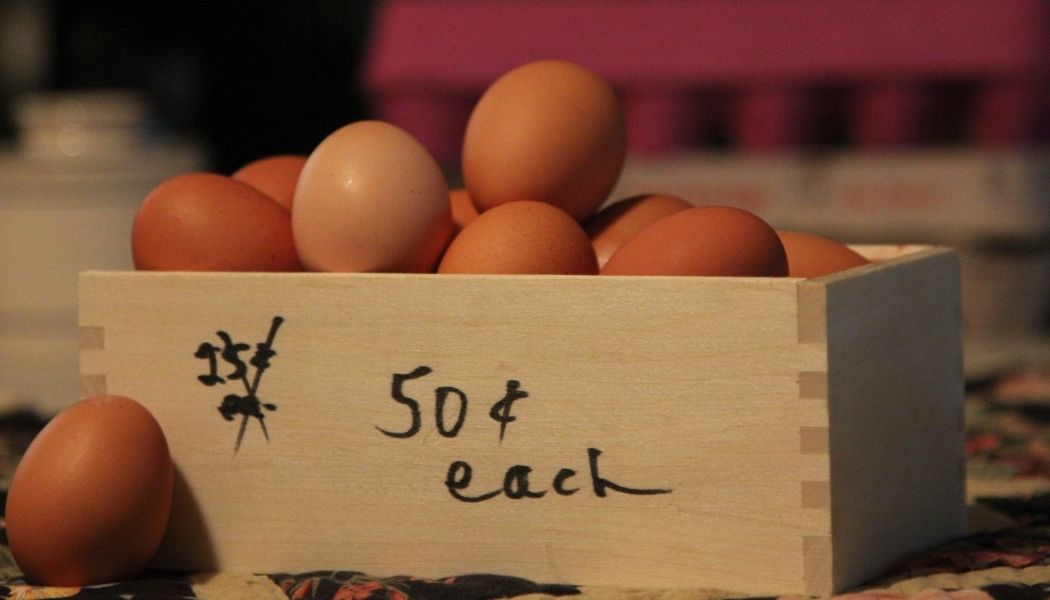Inflation, for many, can be an invisible economic culprit affecting our bank accounts without us even realizing it.
Inflation: the general increase in prices and fall in the purchasing value of money
While inflation in economic terms is defined simply above, it’s never identical across all economic sectors or industries. When calculating future value of money, a financial advisor will factor in an inflation rate of 2% which is a standard target, but different factors can increase that general inflation amount year over year. When we hear “an investment return that beats inflation” we’re generally looking at a net return over 2-3%.
But how does this all affect you? Today? And more importantly, how can it diminish your bank account without you even realizing it?
Let’s look first at what affects inflation
The factors that affect the supply of consumer goods (things we buy) can include, but are not limited to:
- supply shortages (including shortages on parts or labour that create the end consumer product)
- increase in popularity/demand (including artificial scarcities due to hoarding)
- trade policy changes (tariffs increase the cost of bringing a product to a consumer)
- climate change or extreme weather can not only pose transportation challenges, but also affect food supplies
- renewability of a commodity (natural products such as energy and lumber)
- currency shifts (especially in Canada where we’re a country that not only exports a lot but imports most consumer goods)
One or all of the above can cause an increase in the price of a product which trickles down to your pocketbook. Inflation doesn’t always happen overnight, but a shortage in supply and increase in demand can cause immediate price fluctuations.
Case Studies in Inflation
Let’s look at two obvious and recent cases of inflation on consumer goods: sanitizer and lumber.
Sanitizer: In March 2020 when the pandemic first hit North America, we saw a run on certain products that people felt the need to hoard because of fear and uncertainty. One of those was sanitizer, and so we suddenly saw stores increasing the price of sanitizing products up to 1000% of the pre-pandemic shelf price in order to address the overnight and dramatic increase in demand, and limited supply availability. While some may refer to what we saw as “price gouging”, it’s simply an exacerbated example of inflation due to supply and demand shifts. As companies started to ramp up production of sanitizer, and other companies with the production capability also began to contribute supply to the economy, the price level began to slowly deflate closer to the pre-pandemic level. Now that supply has caught up with demand, it’s not difficult to find affordable sanitizing wipes in any grocery store.
 Lumber: While sanitizer is an example of inflation being temporary, looking at lumber is a bit of a different case. The increase in demand for lumber that we’re seeing, starting in the summer of 2020, is not directly because of a global health crisis but rather the effect of that global health crisis. The supply of lumber hasn’t diminished, but rather the demand for it has increased considerably because of consumer behaviour (being locked down at home), combined with sawmill and transportation shutdowns affecting supply chains decreasing the availability of the supply. Add to that factors like an increased housing need, continued low interest rates allowing homeowners to renovate more affordably, and excess cash availability due to shifts in spending and you’ve got some lumber prices up over 300%.
Lumber: While sanitizer is an example of inflation being temporary, looking at lumber is a bit of a different case. The increase in demand for lumber that we’re seeing, starting in the summer of 2020, is not directly because of a global health crisis but rather the effect of that global health crisis. The supply of lumber hasn’t diminished, but rather the demand for it has increased considerably because of consumer behaviour (being locked down at home), combined with sawmill and transportation shutdowns affecting supply chains decreasing the availability of the supply. Add to that factors like an increased housing need, continued low interest rates allowing homeowners to renovate more affordably, and excess cash availability due to shifts in spending and you’ve got some lumber prices up over 300%.
As we’re all stuck at home looking at projects we’d like to get done, lumber companies have benefitted. Wood is a natural resource that requires milling before being brought to the consumer so there is a risk in not just the renewability of that commodity but the speed in which it can be brought to market. Both can affect the price of lumber over a longer period of time. Trees don’t just grow overnight, new mills can take up to 2 years to build. and so while home improvements will begin to level off to pre-pandemic levels in 2022, that doesn’t guarantee the price of lumber will dramatically fall to pre-pandemic levels. They likely never will return to those price levels, but will go down as demand decreases. For projects that can be held off, you’re best to wait until 2022 or even 2023 in order to save some dollars.
Remember that at the end of the day the price you pay for a home renovation or outdoor improvement today doesn’t always increase the value of your home by that amount when you go to sell in the future, but rather by what that may be worth to the new homebuyer.
Not all inflation is obvious
While we’ve looked at two extreme inflation cases above, we have to remember that neither general nor sector-based inflation is always so dramatic and obvious. Have you noticed that some processed foods are smaller in size but boxed the same? Inflation, because you may be paying the same dollars, but you’re walking away with less product. Or when we see produce prices increase because of supply issues or weather. One people often don’t see if they have a drug plan is the increase in the costs of prescription drugs, and yet those increases will be handed off to the plan holder via premium increases. Your employer’s annual costs are then increased, which could affect future increases in your pay.
The fact is that most inflation is annual and incremental (target of 2%) and affects the price of goods or services that we wouldn’t consider giving up because of cost. Think of your utilities — would you suddenly give up heating your home in a Canadian winter because of an increase in natural gas rates? Or would you make other, more discretionary spending sacrifices first? What hits the news headlines are those dramatic and often isolated price surges.
The difficulty with inflation that affects you THE MOST
While the reality of cost increases is nothing new, the difficulty that the average Canadian has with inflation is that salary increases don’t always mirror the cost of goods increases. While it’s a good practice for employers to offer a cost of living increase to pay rates annually, many simply do not or can’t afford it. Public sectors often have pay freezes for multiple years. Small businesses often can’t afford to increase pay across all employees annually without an increase in their own bottom lines. And the minimum wage absolutely does not increase with inflation, making it more difficult for those who are already making the lowest rates of pay to afford to live (note that the minimum wage is already below what’s considered a living wage in Canada).
The final question…
You may be saying to yourself “this is great info Jenn, but why should I care?” At the end of the day, you want to keep more of your money. Inflation is a risk to those dollars and will decrease your purchasing power, essentially forcing you to throw money away. Avoid inflated spending unless absolutely necessary. While you may think that now’s the perfect time to renovate or build that beautiful backyard dream deck, unless they’re projects that are absolutely necessary you’re unintentionally eroding your purchasing power by taking on these projects now.
Next step to keeping more of your money when facing inflation risk is to save more and spend less. This probably seems like an impossible feat when I’ve literally just explained how the price of goods is increasing, but tracking your spending through budget and actuals reviews monthly will not only make it real where expenses ARE on the rise, but also help you to make informed decisions around your spending and saving. Being able to increase your savings will help avoid using credit if there’s an immediate need for a larger expense in the near future.
Additional Resources:
Consumer Price Index, April 2021: StatsCan
